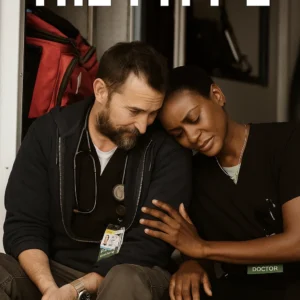In a chilling and tragic event that has gripped the nation, a mass shooting at the National Football League (NFL) headquarters in Midtown Manhattan on July 28, 2025, left four people dead, including the perpetrator, before he turned the gun on himself. The shooter, identified as 27-year-old Shane Devon Tamura from Las Vegas, left behind a suicide note that has sparked widespread discussion. In this note, Tamura claimed he suffered from chronic traumatic encephalopathy (CTE), a degenerative brain disease linked to repeated head injuries, and pleaded for his brain to be studied posthumously. This request, coupled with his expressed grievances against the NFL, has reignited debates about the long-term effects of contact sports, mental health, and the responsibilities of sports organizations. This article explores the details of the incident, Tamura’s background, the contents of his note, the scientific context of CTE, and the broader implications for American society.
The Incident: A Deadly Rampage
The shooting unfolded at 345 Park Avenue, a skyscraper housing the NFL headquarters alongside offices of major financial firms like Blackstone. On the morning of July 28, Tamura entered the building armed with an AR-15-style assault rifle, which he had reportedly assembled himself. Surveillance footage captured him walking calmly into the lobby before opening fire, killing two security guards—one an NYPD officer named Didarul Islam—and injuring an NFL employee. He then took an elevator to the 33rd floor, where he fatally shot a real estate executive and a business management associate at Rudin Management before shooting himself in the chest. The attack, lasting less than 10 minutes, marked the deadliest mass shooting in New York City in 25 years.
Police Commissioner Jessica Tisch confirmed Tamura acted alone, with no ongoing threat to the public. The building was locked down, and neighboring offices evacuated as authorities pieced together the motive. A suicide note found in Tamura’s wallet, scribbled across three pages of planner inserts, provided a haunting glimpse into his state of mind, alleging CTE and blaming the NFL. Mayor Eric Adams noted, “He alluded to having CTE from playing football,” suggesting a targeted grievance against the league, though Tamura ended up on the wrong floor due to a mistaken elevator choice.
Shane Devon Tamura: A Troubled Past
Shane Devon Tamura, born and raised in Las Vegas, Nevada, was a former high school football player whose life took a dark turn. Friends and former teammates described him as a talented athlete at Granada Hills High School, where he played as a linebacker until an injury in his senior year sidelined him. Posts on social media from that time show a confident young man, but later years revealed a different story. Tamura worked as a security officer at a Las Vegas casino, a job that ended abruptly in 2023 following reports of erratic behavior. Neighbors recalled him as increasingly reclusive, with police called to his apartment multiple times for disturbances.
Tamura’s father, a retired Los Angeles police officer who served from 1990 to 2008, declined to comment, but sources suggest a strained family dynamic. Court records indicate Tamura had a documented history of mental illness, including diagnoses of depression and anxiety, though it’s unclear if he received consistent treatment. His three-day drive from Las Vegas to New York, culminating in the attack, points to a premeditated act, possibly fueled by a deteriorating mental state. The suicide note, a mix of anger and remorse, hints at a man grappling with inner turmoil he attributed to his football past.
The Suicide Note: A Cry for Understanding
The three-page suicide note, discovered neatly folded in Tamura’s wallet, is a disturbing artifact of his final hours. According to police sources and media reports, it reads in part: “Terry Long football gave me CTE, and it caused me to drink a gallon of antifreeze. You can’t go against the NFL; they’ll squash you. Study my brain, please. I’m sorry. Tell Rick I’m sorry for everything.” The mention of Terry Long, a former Pittsburgh Steelers lineman who died by suicide in 2005 after drinking antifreeze and was later diagnosed with CTE, suggests Tamura saw parallels in his own life. The note also accuses the NFL of concealing brain injury risks for profit, a claim echoing lawsuits against the league.
Tamura’s request to “study my brain” reflects a desire for his death to contribute to scientific understanding, possibly driven by awareness of CTE research. The apology to “Rick”—potentially a friend, family member, or coach—adds a layer of personal regret. Experts note the note’s tone blends delusion with a lucid plea, consistent with mental health struggles exacerbated by untreated conditions. This document has become a focal point for investigators and researchers, raising questions about whether CTE or other factors drove his actions.
CTE: The Science Behind the Claim
Chronic Traumatic Encephalopathy (CTE) is a progressive brain disease caused by repeated head trauma, commonly associated with contact sports like football, hockey, and boxing. Unlike acute injuries like concussions, CTE develops over years, leading to degeneration of brain tissue, particularly in areas controlling mood, impulse, and memory. Symptoms include depression, aggression, confusion, and suicidal ideation, often emerging decades after the trauma. Diagnosis requires postmortem examination, as living patients cannot be definitively tested.
Research from the Boston University CTE Center, which has studied hundreds of athletes’ brains, shows CTE prevalence among football players: 91% of NFL players and 88% of college players in one study exhibited signs. The disease results from repeated subconcussive hits—impacts not severe enough to cause obvious injury—accumulating over time. A 2023 study linked CTE to a 50% increased risk of suicide in affected individuals, though causation remains debated. Tamura’s claim of CTE, based on high school football, is plausible if he sustained numerous hits, though his age and lack of professional play suggest an early onset, possibly accelerated by other factors.
The NFL has faced scrutiny since the 2010s, with former players like Dave Duerson and Aaron Hernandez donating their brains for CTE research after suicides. In 2016, the league settled a $1 billion concussion lawsuit, acknowledging long-term risks, but critics argue it downplayed evidence earlier. Tamura’s note aligns with this narrative, accusing the NFL of negligence, though his targeting of the league’s headquarters may reflect a distorted perception rather than a direct connection to his football experience.
Mental Health and Violence: A Complex Link
The intersection of mental illness and mass shootings remains a contentious topic. Studies, including a 2021 Columbia University analysis, found that while many shooters exhibit psychiatric symptoms, only a minority have diagnosed severe disorders like schizophrenia. Tamura’s history of depression and anxiety, combined with possible CTE, suggests a multifaceted mental health crisis. Research indicates that unmedicated conditions, coupled with access to firearms, heighten violence risk, though most mentally ill individuals are not violent.
Tamura’s suicide note and self-inflicted chest wound—preserving his brain for study—echo cases like Charles Whitman, the 1966 UT Tower shooter, who requested an autopsy due to suspected brain abnormalities. A tumor was found, but its role in his actions remains disputed. Similarly, Robert Card, the 2023 Maine shooter, showed brain damage from blast exposure, per Boston University findings. These cases highlight how brain injuries might amplify underlying mental health issues, though societal factors—gun availability, isolation, and cultural violence—also play critical roles.
Public and Official Responses
The shooting prompted swift reactions. Governor Kathy Hochul expressed condolences, while Mayor Adams called for mental health reforms, stating, “This tragedy underscores the need to address untreated illness.” The NFL issued a statement expressing grief but declined to comment on Tamura’s allegations, directing inquiries to ongoing investigations. The league’s decision to have employees work remotely through mid-August reflects the incident’s impact.
Public sentiment on X reflects a mix of shock and debate. Some users sympathize with Tamura’s CTE claim, urging brain research, while others criticize the NFL, with posts like “Time to hold the league accountable.” Skeptics argue his mental illness, not football, drove the act, citing his documented history. The note’s viral spread has fueled calls for better athlete support and gun control, though no consensus emerges.
Implications for Sports and Society
Tamura’s case amplifies ongoing discussions about CTE and sports. The NFL has implemented rule changes—e.g., banning helmet-to-helmet hits—and funds concussion research, but critics demand more, including baseline brain scans for players. High school football, where Tamura played, lacks similar oversight, raising concerns about youth exposure. A 2024 study estimated 1.6 million U.S. children sustain sports-related concussions annually, many undiagnosed.
The incident also spotlights mental health stigma. Experts advocate for early intervention, noting Tamura’s untreated conditions might have been mitigated with care. Gun violence, with 254 mass shootings in 2025 per the Gun Violence Archive, remains a pressing issue, with firearms involved in 79% of U.S. murders last year. Tamura’s access to an AR-15, despite his history, underscores gaps in background checks.
The Brain Research Request: A Scientific Opportunity
Tamura’s plea to study his brain has reached the scientific community. The Boston University CTE Center, contacted by the Maine Chief Medical Examiner’s office (which handled the case due to jurisdictional overlap), plans to analyze the brain for CTE markers. Dr. Ann McKee, a leading neuropathologist, noted, “This could provide critical data on early-onset CTE and its behavioral impacts.” Results, expected in months, may inform prevention strategies, though they won’t excuse the violence.
Historical precedents, like Duerson’s 2011 brain donation, have advanced CTE understanding. Tamura’s case, if CTE is confirmed, could pressure the NFL to expand support for former players and youth athletes. However, some neurologists caution against overgeneralization, noting brain injuries alone rarely cause mass violence without psychological or environmental triggers.
Ethical and Legal Considerations
The request raises ethical questions. Using Tamura’s brain for research, while honoring his wish, risks glorifying his actions. Legal experts debate whether his mental state negates culpability, though U.S. law typically holds perpetrators accountable regardless of illness unless proven insane—a high bar. The note’s discovery has also prompted an investigation into an associate who allegedly supplied rifle parts, adding a legal dimension.
Privacy concerns surround the family, with Tamura’s father reportedly opposing publicity. Yet, the public’s right to know, balanced against scientific gain, fuels a delicate debate. Researchers emphasize consent, even posthumous, as a guiding principle, ensuring Tamura’s request drives the study.
Conclusion: A Tragedy with Lasting Echoes
Shane Devon Tamura’s mass shooting and suicide note have left a scar on New York and a mark on national discourse. His claim of CTE, plea for brain research, and accusations against the NFL weave a complex narrative of personal suffering and societal failure. As scientists probe his brain for answers, the incident challenges sports organizations, mental health systems, and policymakers to address the hidden costs of violence—on the field and beyond. While Tamura’s actions cannot be undone, his final request may yet illuminate paths to prevent future tragedies, turning a moment of darkness into a call for understanding and change.



